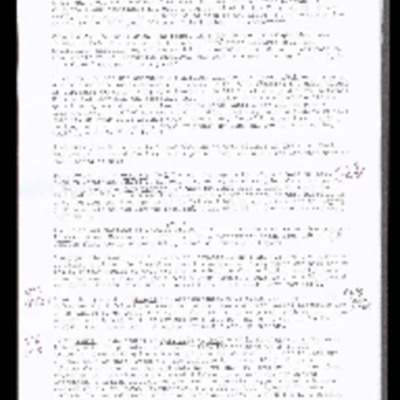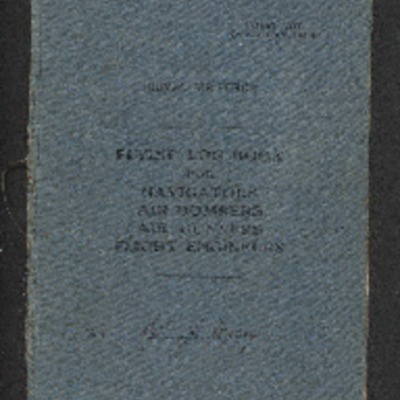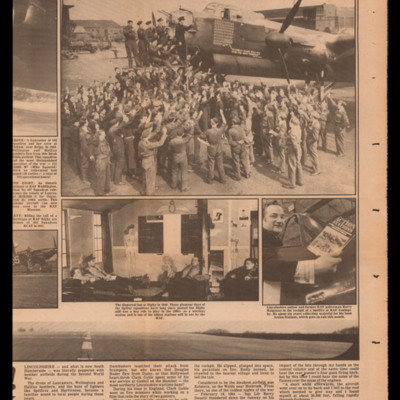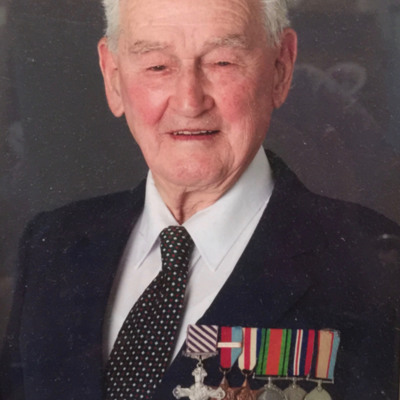Browse Items (4441 total)
- Tags: bombing
Royal Air Force Bomber Command attacks on enemy communications
Dortmund-Ems canal at Ladbergen
Interview with David Sanders
189 Squadron detail for special duty
Tags: 189 Squadron; bombing; RAF Bardney
Interview with Langford William Green
Tags: 218 Squadron; air gunner; aircrew; bale out; bombing; bombing of Dresden (13 - 15 February 1945); briefing; crewing up; demobilisation; Halifax; Lancaster; military service conditions; Operation Exodus (1945); Operation Manna (29 Apr – 8 May 1945); Operational Training Unit; RAF Chedburgh; RAF Sandtoft; training
First bomb
Tags: 102 Squadron; aerial photograph; bombing; training; Whitley
Operations with 102 Squadron Pocklington and 10 OTU detachment, St Eval
Leonard Green’s navigator’s, air bomber’s and air gunner’s flying log book
Tags: 1660 HCU; 29 OTU; 50 Squadron; 61 Squadron; 83 Squadron; Advanced Flying Unit; aircrew; Anson; bombing; bombing up; Cook’s tour; Dominie; Harris, Arthur Travers (1892-1984); Heavy Conversion Unit; Lancaster; Lancaster Finishing School; Lancaster Mk 1; Lancaster Mk 3; Manchester; military service conditions; Operation Dodge (1945); Operation Exodus (1945); Operational Training Unit; perception of bombing war; Proctor; RAF Bitteswell; RAF Bruntingthorpe; RAF Coningsby; RAF Manby; RAF Skellingthorpe; RAF Swinderby; RAF Syerston; RAF Wigtown; training; Wellington; wireless operator
Interview with Syd Marshall
Derrick Allen's flying log book for navigators, air bombers, air gunners, flight engineers
Tags: 1654 HCU; 17 OTU; 467 Squadron; 619 Squadron; air gunner; Air Gunnery School; aircrew; Anson; bale out; bombing; bombing of Dresden (13 - 15 February 1945); C-47; Heavy Conversion Unit; Initial Training Wing; Lancaster; Lancaster Finishing School; Lancaster Mk 1; Lancaster Mk 3; Operational Training Unit; RAF Blyton; RAF Bridgnorth; RAF Bridlington; RAF Cardington; RAF Pembrey; RAF Silverstone; RAF Spanhoe; RAF St Athan; RAF Strubby; RAF Syerston; RAF Waddington; RAF Wigsley; shot down; Stirling; training; Wellington
Incendiary hail swamps the target
Tags: bombing; incendiary device; Lancaster
I went back, saw Duisburg die
He flew with the R.A.F. to Ulm. Ex-pilot amazed by our new bombing technique
Bombing operations November 1944
Tags: bombing; incendiary device; Lancaster; Typhoon
Escape Photo
Bombing operations early 1945
Elsham Wolds
Tags: arts and crafts; bombing; Halifax; Lancaster; RAF Elsham Wolds; Wellington
Sturheit
Tags: bombing; propaganda
Bill Thomas memoir
Tags: 153 Squadron; 166 Squadron; 1667 HCU; 28 OTU; aircrew; Anson; Bolingbroke; bomb aimer; bombing; Bombing and Gunnery School; bombing of Dresden (13 - 15 February 1945); crewing up; ground personnel; Halifax; Heavy Conversion Unit; incendiary device; Initial Training Wing; Lancaster; Lancaster Finishing School; mine laying; Operational Training Unit; perception of bombing war; promotion; RAF Castle Donington; RAF Heaton Park; RAF Hemswell; RAF Kirmington; RAF Sandtoft; RAF Scampton; RAF Strubby; RAF Wigtown; training; Wellington
John Casey's flying log book for navigators, air bombers, air gunners and flight engineers
Tags: 1654 HCU; 29 OTU; 61 Squadron; 83 Squadron; air gunner; Air Gunnery School; aircrew; Anson; bombing; bombing of Dresden (13 - 15 February 1945); Cook’s tour; Heavy Conversion Unit; Lancaster; Lancaster Finishing School; Martinet; Operation Dodge (1945); Operational Training Unit; RAF Coningsby; RAF North Luffenham; RAF Skellingthorpe; RAF Stormy Down; RAF Syerston; RAF Wigsley; Stirling; training; Wellington
Interview with Harold Beech. One
Syd Marshall and Grand Slam bomb
Photograph 2 is a group of people outside a building.
Tags: bombing; Grand Slam; RAF Coningsby
Newspaper articles featuring 103 Squadron
Interview with Herbert Adams
Tags: 467 Squadron; 5 Group; aircrew; Anson; bombing; control caravan; Cook’s tour; crewing up; demobilisation; Distinguished Flying Cross; fuelling; Gee; ground personnel; H2S; Lancaster; Me 110; military living conditions; navigator; Operational Training Unit; promotion; RAF Lichfield; RAF Llandwrog; RAF Swinderby; RAF Waddington; RAF Wigsley; sanitation; Schräge Musik; service vehicle; Stirling; superstition; Tiger force; training; V-1; V-2; V-weapon; Wellington; Women’s Auxiliary Air Force

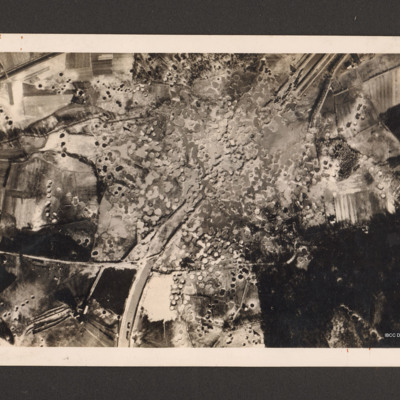
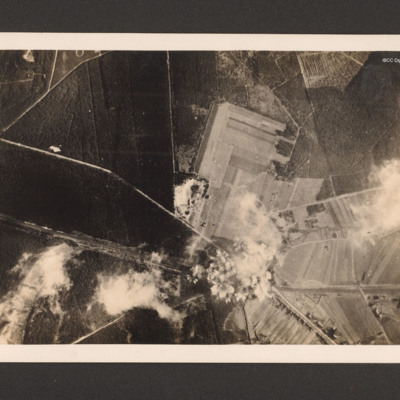
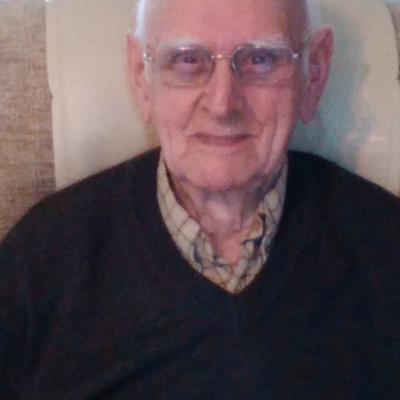
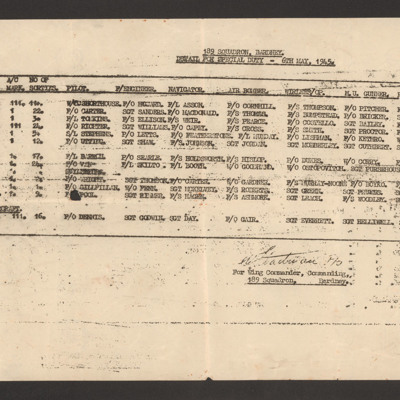

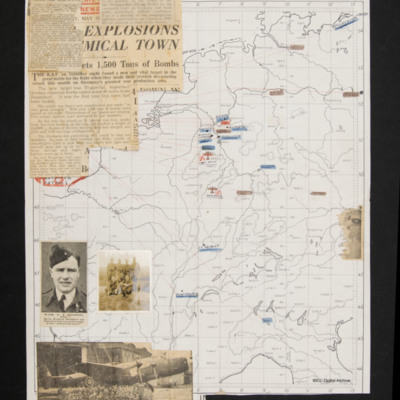
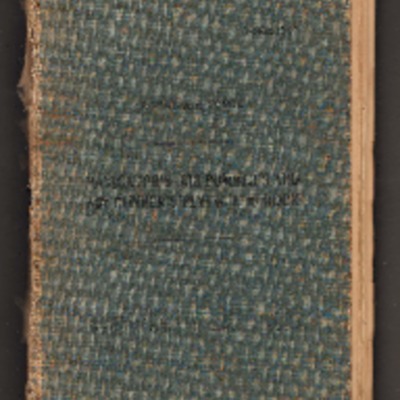
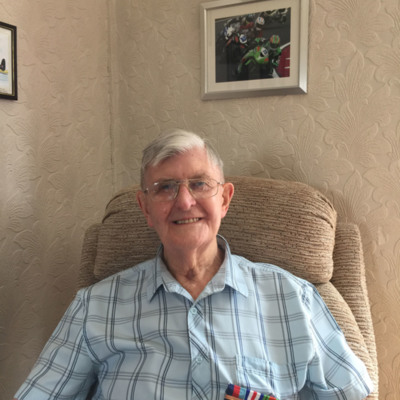


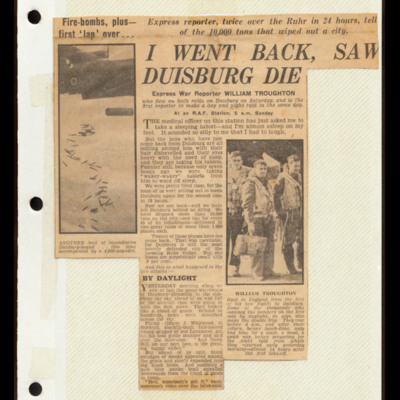
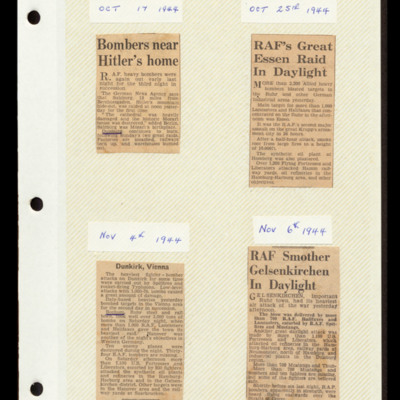
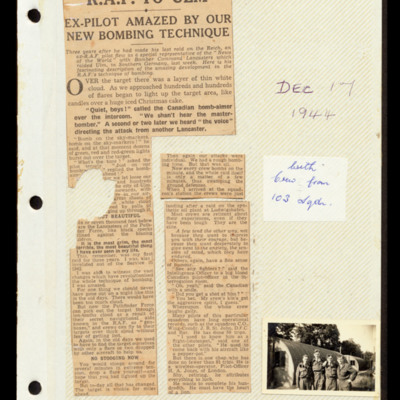
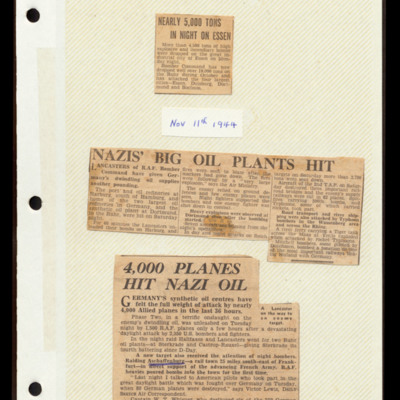
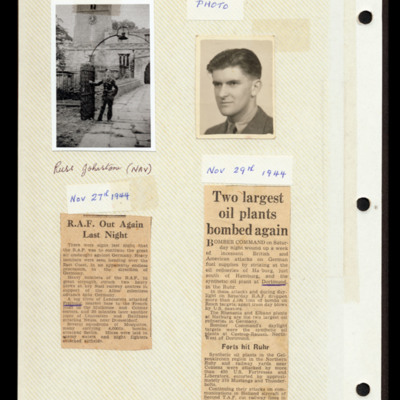
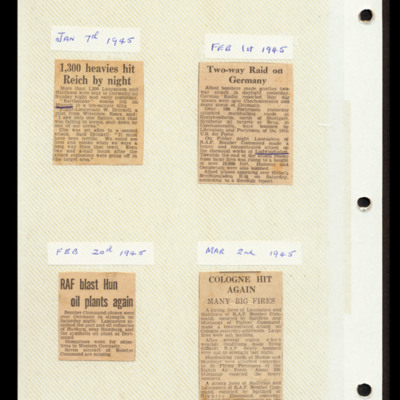
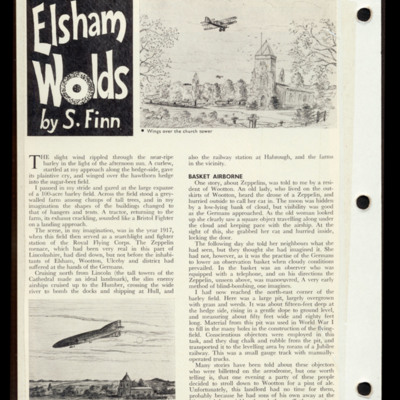
![MRadacichM[Ser'#-DoB]-170110-080002.jpg MRadacichM[Ser'#-DoB]-170110-080002.jpg](https://ibccdigitalarchive.lincoln.ac.uk/omeka/files/square_thumbnails/38/2473/MRadacichM[Ser -DoB]-170110-080002.jpg)
